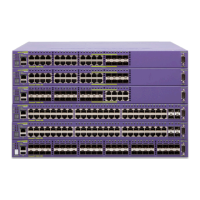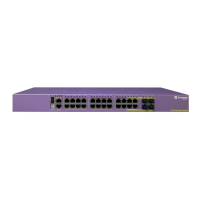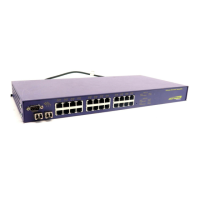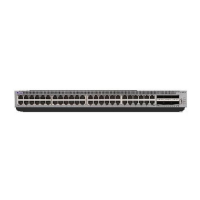RMON
Summit 200 Series Switch Installation and User Guide 165
RMON
Using the Remote Monitoring (RMON) capabilities of the switch allows network administrators to
improve system efficiency and reduce the load on the network. The following sections explain more
about the RMON concept and the RMON features supported by the switch.
NOTE
You can only use the RMON features of the system if you have an RMON management application,
and have enabled RMON on the switch.
About RMON
RMON is the common abbreviation for the Remote Monitoring Management Information Base (MIB)
system defined by the Internet Engineering Task Force (IETF) documents RFC 1271 and RFC 1757,
which allows you to monitor LANs remotely.
A typical RMON setup consists of the following two components:
• RMON probe—An intelligent, remotely controlled device or software agent that continually collects
statistics about a LAN segment or VLAN. The probe transfers the information to a management
workstation on request, or when a predefined threshold is crossed.
• Management workstation—Communicates with the RMON probe and collects the statistics from it.
The workstation does not have to be on the same network as the probe, and can manage the probe
by in-band or out-of-band connections.
RMON Features of the Switch
Of the nine groups of IETF Ethernet RMON statistics, the switch supports these four groups:
• Statistics
• History
• Alarms
• Events
This section describes these groups and discusses how they can be used.
show log {<priority>} Displays the current snapshot of the log.
Specify the priority option to filter the log to
display message with the selected priority or
higher (more critical). Priorities include critical,
emergency, alert, error, warning, notice, info,
and debug. If not specified, all messages are
displayed.
show log config Displays the log configuration, including the
syslog host IP address, the priority level of
messages being logged locally, and the priority
level of messages being sent to the syslog
host.
Table 48: Logging Commands (continued)
Command Description
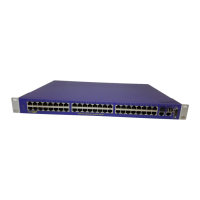
